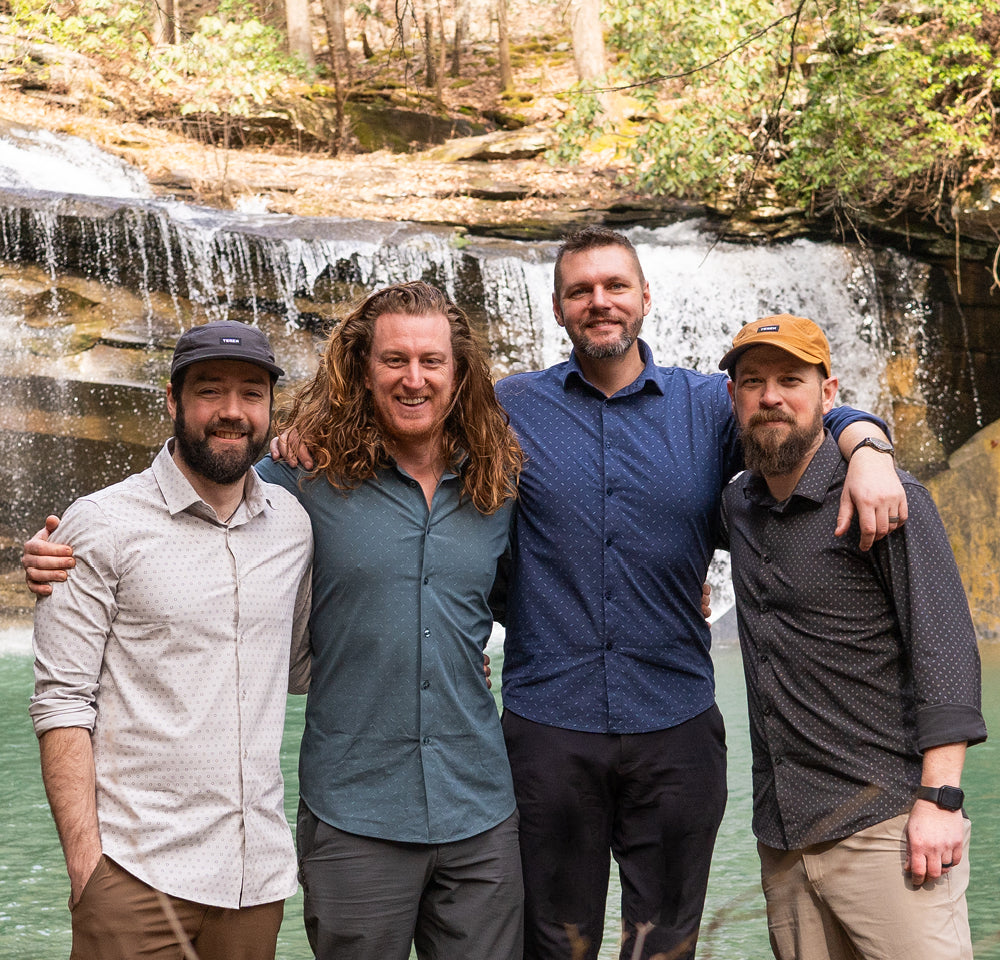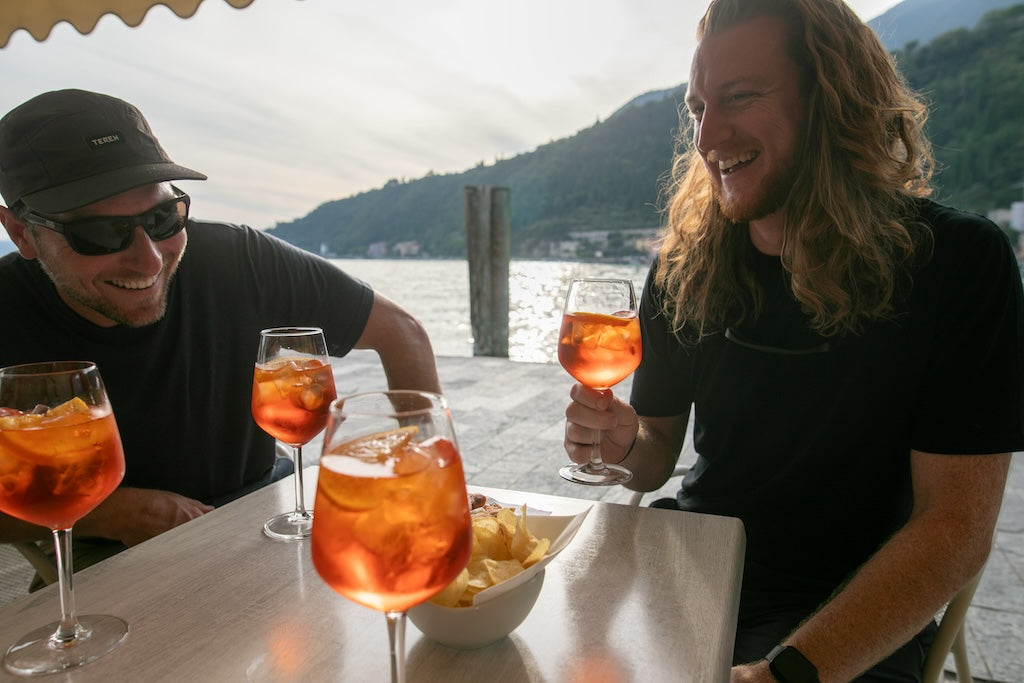For most people, the camping season ends when the weather drops and winter sets in. However, there’s an unmatched beauty and serenity that winter camping brings to those brave enough to venture out.
Camping in the winter can feel daunting — but it doesn't have to be. The best way to ensure a great winter camping experience is to be prepared.
Below, we delve into our top winter camping tips for ensuring your trip is safe and comfortable.
7 Tips For Staying Warm on Your Winter Camping Trip
Follow these 7 principles for winter camping to ensure your trip is as enjoyable as possible:
1. Choose the Right Location
Finding the right place to set up your tent is a much more delicate task if there’s snow on the ground.
First, make sure you find a spot that’s sheltered from the wind. The best thing to look out for is a hill or grove of trees that can act as a windbreak. Don’t camp too close to snow-covered trees though, as heavy snow can fall on your tent and make it difficult to get out.
Next, if you’re camping after a fresh snowstorm, remember to be avalanche-aware. Stay away from the base of a snowy mountain or steep slope.
2. Invest in Quality Winter Clothing
Staying warm and comfortable on your winter camping trip really comes down to finding the right clothes to withstand cold temperatures. This means you’ll want to focus on the quality and type of fabric you're buying.
Moreso, once you find excellent winter clothing to keep you warm, there's a proper way to layer for maximum performance.
3. Use Layering Techniques for Warmth
How you layer your clothing is almost as important as choosing the right clothing in the first place. Generally speaking, you’ll want to start with a base layer, then a mid-layer, then an outer layer.
Here is what you should look for in each:
Base Layer
Your base layer is what will be directly in contact with your skin while you’re out. This means that if you let moisture in or start sweating—this layer will be responsible for keeping you dry and comfortable. Look for a base layer that can deliver:
- Moisture wicking abilities
- Breathability
- UV protection
- Odor resistance
- Anti-microbial
- Versatility
This is why we highly recommend a Merino wool base layer like the Long Sleeve Traveler Tee. No other fabric performs quite as well as Merino wool in extreme weather. Plus, did you know that, unlike most fabrics, Merino wool can still keep you warm even when it's wet?
Mid-Layer
Your mid-layer has a very important role to play since it will act as insulation between your base and outer layers. It needs to regulate your body temperature and act as your new outer layer when it’s warm enough to shed your outer shell. Look for a mid-layer that provides:
- Insulation
- The appropriate thickness (thicker generally means more insulation)
- Breathability
- Durability
- Packability
- Versatile design
For a mid-layer we generally recommend fleece or a puffy jacket because of their superior insulating properties.
Outer Layer
Your outlet layer is your first line of defense against snow and wind and should generally act as a protective shell against the elements.
This is what to look for when shopping for an outer layer:
- Waterproof and windproof
- Adjustable features to keep moisture and drafts out
- Ventilation zippers
- Breathability
- Weight and packability
- Zippered pockets
We highly recommend the Cloudland shell for your all-in-one outer layer. It is built to withstand even the harshest conditions while still remaining stylish.
4. Stay Dry and Hydrated
Staying dry and hydrated is the key to staying comfortable while camping. If there is snow on the ground or you are doing any vigorous activity, getting wet can be unavoidable.
Make sure to bring spare dry clothing and keep your sleeping bag and tent in a waterproof bag if it's supposed to snow. It is also helpful to bring a tent footprint to keep your tent from letting moisture in.
Packing in enough water can be challenging and heavy, so it’s important to know how to safely collect drinking and cooking water.
If you’re lucky enough to be by a water source that isn’t frozen, you can run it through a purifier like a LifeStraw or use purifying tablets. If there’s no water source around, you can always melt snow.
However, remember that melting snow and boiling it can be incredibly time-consuming. Generally speaking, 10 gallons of snow would make approximately 1 gallon of water. Luckily, you only need to keep the melted snow at a rolling boil for 1 minute (3 if you’re above 6,500 feet of elevation) to ensure it is safe to drink.
5. Master the Art of Fire Making
Crafting a roaring fire is a great way to stay warm, dry out wet clothing, and even cook. The problem is that finding dry wood during winter conditions can be a challenge.
Look for branches that are broken but haven’t fallen to the ground. This ensures they’ve had time to dry out naturally.
Shake branches to encourage loose twigs and kindling to fall. Pines and spruces are naturally more water resistant than drier species like aspen and poplar. This makes them a much better choice for finding firewood in a pinch.
Once you have firewood and kindling, it's time to start building and starting your fire. This can be the trickiest part. If you have a fire starter or fuel then you’re way ahead of the game. If not, you’ll need to find something that will quickly and easily catch fire to encourage the larger pieces of wood to do the same.
Sap and natural oils in branches are very flammable and can greatly expedite your fire if you can find it. The centers of tree branches tend to have more concentrations of oil and sap, so that’s a great place to start. Otherwise, ground-up tree bark can be a great fire starter as well.
After you have all of your kindling, logs, and firestarter ready—it's time to make your fire!
Start with small twigs and kindling and gradually build up to larger pieces. Hopefully, you have matches and a lighter, but if not check your laundry bag.
Why your laundry bag? Because there are some awesome clothing brands out there that include fire starters in their collar stays.
Oh, and by the way, we include fire starters in the collar stays of our Daily Driver Shirts.
6. Prepare Nutritious Hot Meals
Did you know that foods that take longer to digest actually naturally raise your body temperature? This is why a nice, hearty stew or soup can help you get warm on those cold winter nights.
While it may sound obvious that higher-temperature foods will keep you warmer, there are actually plenty of other snacks that don’t require preparation to keep on hand. Higher-nutrient foods like cheese, butter, nuts, and granola will raise your body temperature naturally and keep you fueled for your adventures.
7. Practice Safety and Leave No Trace
The three big safety concerns you should keep in mind for your winter camping adventures are avalanche awareness, frostbite prevention, and emergency preparedness.
If you’re serious about getting out in extreme snow, it’s wise to take an avalanche awareness course. If you’re sticking to less risky camping, we recommend the book Freedom of the Hills. This book is an invaluable resource for anyone looking to do any winter backcountry adventuring. You’ll learn to make shelter, the science of snow and avalanche awareness, route planning, environmental ethics, and more.
And lastly, anytime you head outdoors you should leave it better than when you arrived. Alpine ecosystems are fragile and can be easily disrupted by human impact. Clean up your trash, leave wildlife alone, and ensure you’re camping at least 200 feet from water sources. Check out the full breakdown of the Leave No Trace Principles.
Other Winter Camping Gear to Bring
Some other valuable winter gear to bring are:
Winter Sleeping Bag
Different sleeping bags are rated for different temperatures. A low degree rating for a sleeping bag refers to the lowest temperature at which the bag is designed to keep an average sleeper warm. Your sleeping bag should have a degree rating on the tag or the outside of the bag.
Sleeping Pad
Having extra insulation between your body and the ground will do wonders for keeping you warm. Thicker sleeping pads will provide better insulation between you and the ground. There are some sleeping pads that are specifically designed to keep you warmer during colder weather.
Tent Footprint
If you’re sleeping directly on snow or wet ground, a tent footprint can be an extra barrier to prevent moisture from seeping in. It can also provide a bit more insulation to help keep warmth in your tent.
Winter Camping Tent
A four-season tent can withstand intense weather conditions, but it's also thicker and will better keep your body heat in.
Snow Shovel
A lightweight, collapsible snow shovel is invaluable for digging out a campsite, creating a snow shelter, or clearing pathways.
Dry Bags
Even if there’s no snow in the forecast, keeping your gear warm in cold weather can be extra challenging. Colder weather means more condensation. Keep your spare clothing and electronics in dry bags to ensure they stay moisture-free.
Frequently Asked Questions
Here are some common questions about winter camping:
How cold is too cold for winter camping?
The farther the temperature drops, the more extreme your camping experience will be. If you’re venturing out for your first winter camping trip, we recommend you stick to temperatures above 32 degrees. More experienced winter campers can withstand sub-zero temperatures with extreme preparation.
How do I prevent my water from freezing?
Use an insulated water bottle or a vacuum-sealed thermos to keep liquids warm for longer. Store water bottles upside down, as the ice forms from the top, leaving the bottom liquid for longer.
What should I wear for winter camping?
Dress in layers to regulate body temperature. Opt for moisture-wicking base layers, insulating mid-layers like fleece or a puffy jacket, and a waterproof, breathable outer layer. Don't forget warm socks, gloves, and a hat.
What's the most important winter camping tip?
Preparation is key. Plan your trip thoroughly, bring the right gear, inform someone about your plans, and be adaptable. Respect the weather, and always prioritize safety and well-being above all else.
Final Thoughts
Cold weather camping takes more preparation than warm weather camping, but the serenity, beauty, and overall experience are rewarding and worth the extra effort.
Just remember that preparation is the key to a great experience in the outdoors—especially in extreme conditions. Bring plenty of layers, and nutritious food, and keep yourself and your gear dry at all costs.









